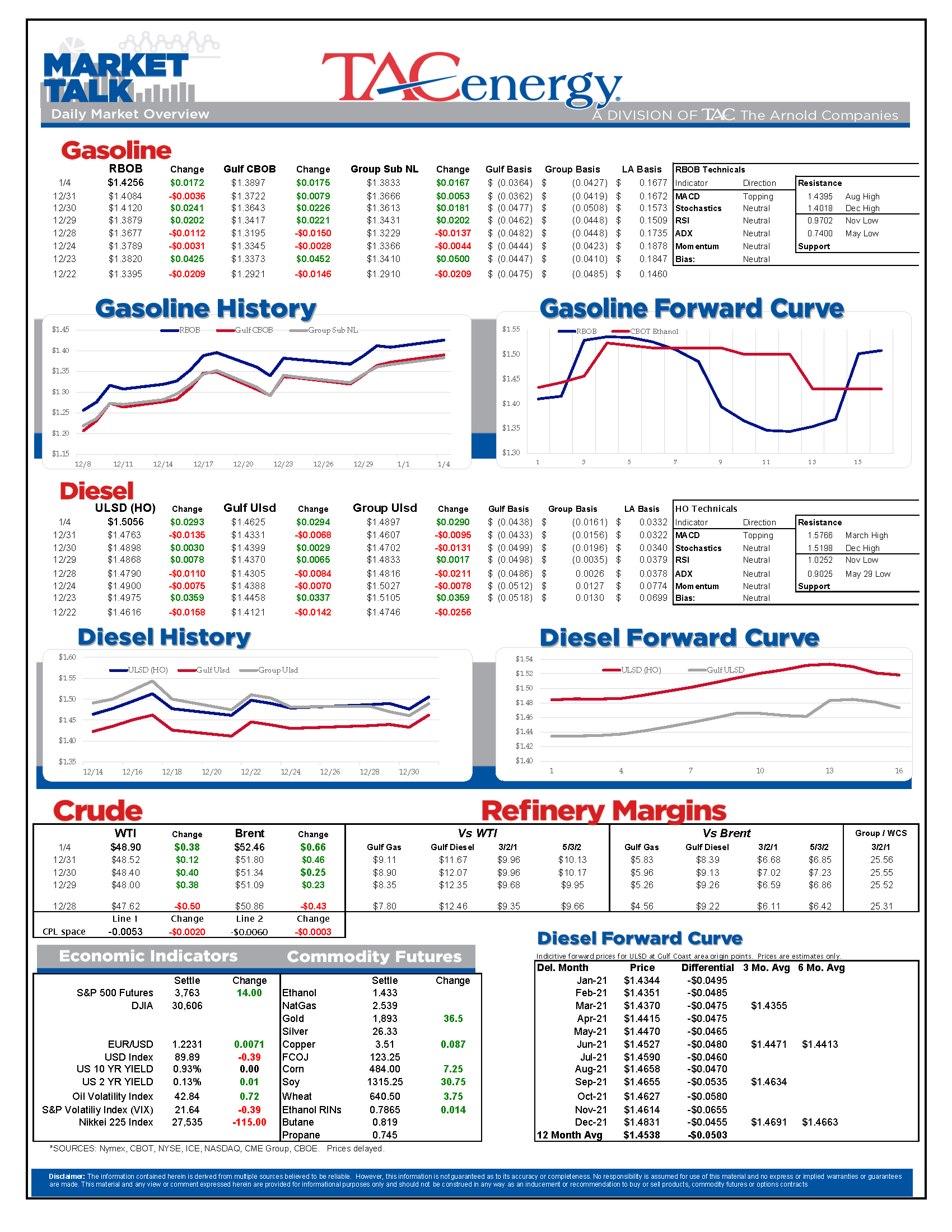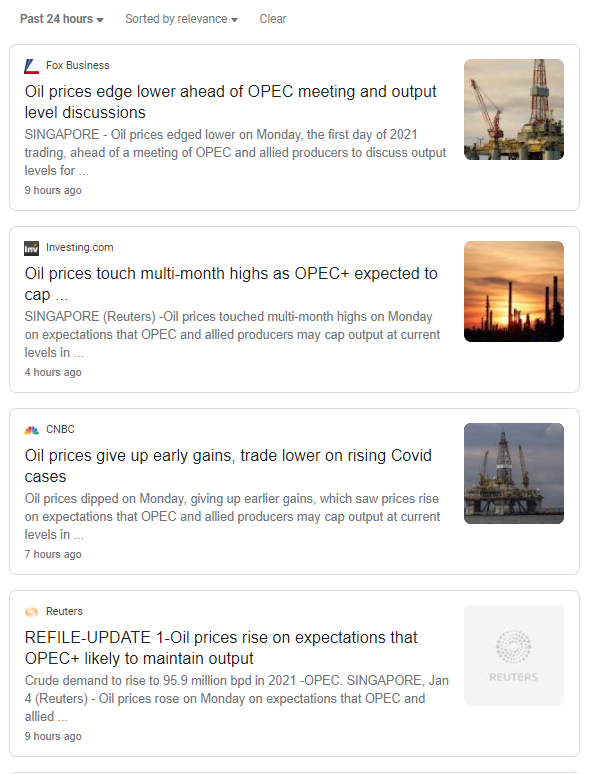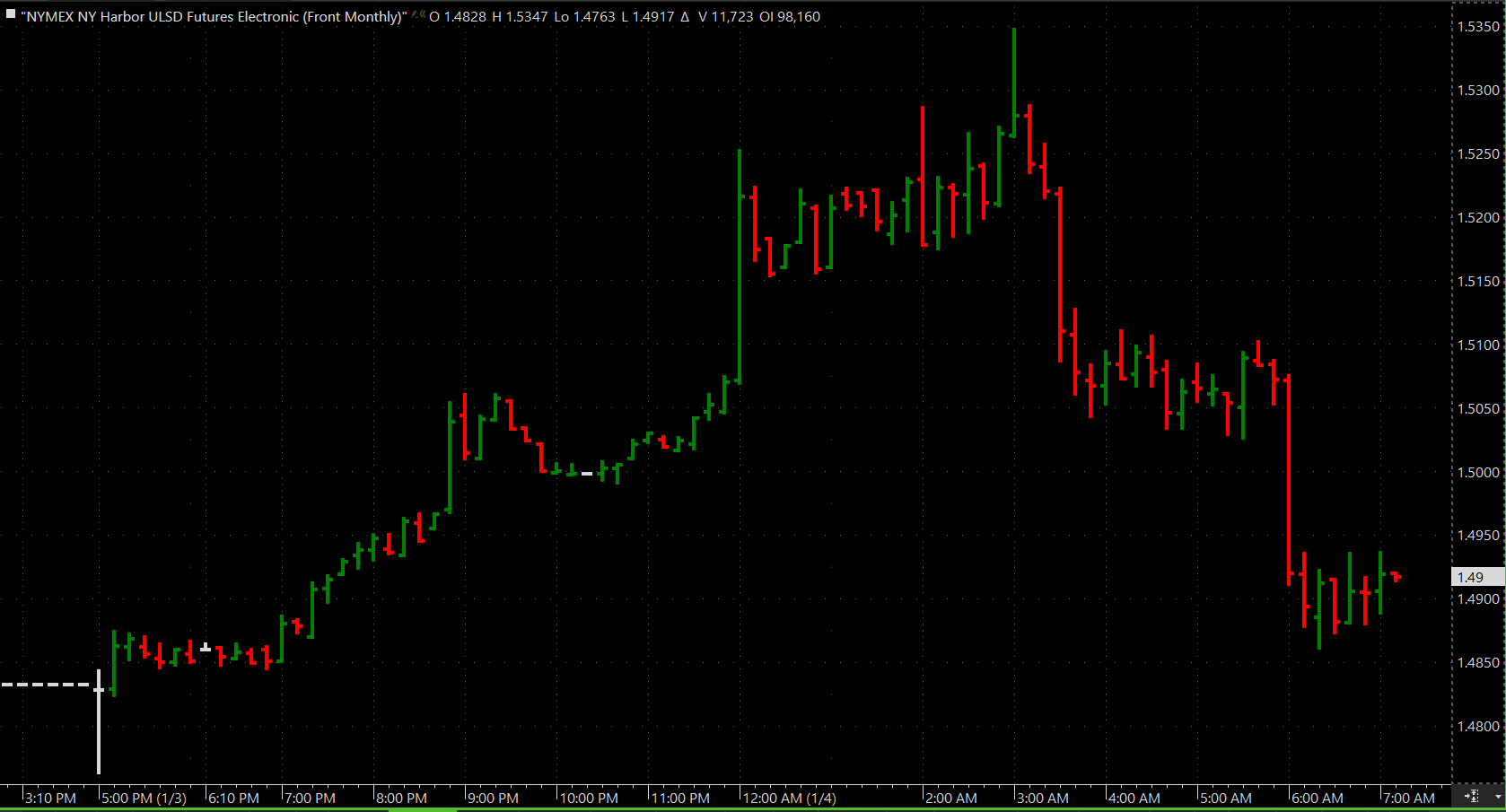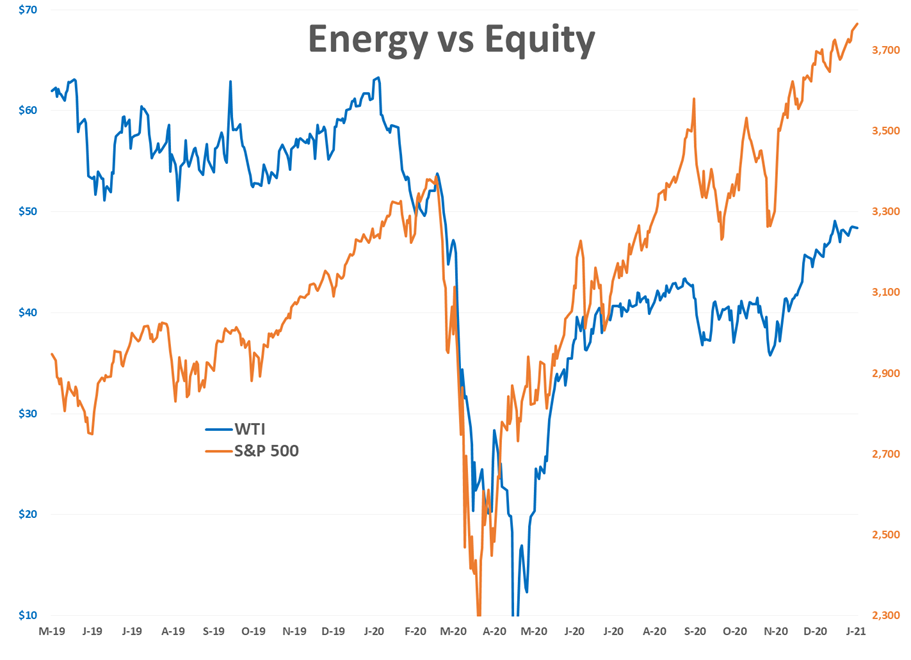First Trading Session Indicates Another Volatile Year

If the first trading session is an indication of things to come, it’s going to be another volatile year for energy markets. Oil and diesel prices surged 4% or more to reach 10 month highs in overnight trading, with WTI coming just a few ticks away from the $50 mark, only to see those gains completely erased before a second rally started around 7:30 central. Headline writers can’t quite keep pace with the big early swings that may be caused by expectations for the OPEC meeting taking place today, the latest updates on the global vaccine race, or simply due to the positioning of capital as the new year begins.
ULSD futures were up a nickel around 3 a.m., and RBOB futures were up more than 4 cents, but both have since traded all the way back into negative territory, with the most heavy selling starting around 6 a.m., only to bounce back into positive territory again. This early action could be significant technically, as the complex is on the verge of a breakout to the upside on the charts, but if the rallies continue to be followed by heavy selling, we could be stuck in an extended period of sideways that tends to be whiplash inducing.
U.S. equity markets are starting the year on a more bullish note, with S&P 500 futures trading at record highs, following a strong start to trading in Asian and European markets, and the U.S. dollar is falling once again, reaching its lowest level since April 2018.
The CFTC’s commitments of traders report was delayed again due to holidays and should be out later this afternoon. The ICE’s version of the report showed minimal change in the managed money positions in Brent, but a large increase in bets on higher prices in Gasoil, suggesting a renewed interest in diesel prices from the big speculators.
The EIA is starting off the year highlighting its U.S. Energy Atlas, and interactive mapping program that shows details on energy infrastructure of all types nationwide. The interactive nature of that program seems particularly useful these days as the past year saw more refinery closures announced than the country had experienced in nearly 40 years. So far we’ve made it three days into 2021 without any new announcements of plants being shuttered, but we’re also in the worst few weeks for demand of the entire year historically so there still could be more to come.
Click here to download a PDF of today's TACenergy Market Talk.
News & Views
View All
Energy Futures Are Caught Up In Headline Tug-O-War This Morning
Energy futures are caught up in headline tug-o-war this morning with Canadian oil production concerns and a positive US GDP report trying to push prices higher while sinking Chinese demand worries and Gaza ceasefire hopes are applying downward pressure. The latter two seem to be favored more so far this morning with WTI and Brent crude oil futures down ~45 cents per barrel, while gasoline and diesel prices are down about half a cent and two cents, respectively.
No news is good news? Chicago gasoline prices dropped nearly 30 cents yesterday, despite there not being any update on Exxon’s Joliet refinery after further damage was discovered Wednesday. Its tough to say if traders have realized the supply situation isn’t as bad as originally thought or if this historically volatile market is just being itself (aka ‘Chicago being Chicago’).
The rain isn’t letting up along the Texas Gulf Coast today and is forecasted to carry on through the weekend. While much of the greater Houston area is under flood watch, only two refineries are within the (more serious) flood warning area: Marathon’s Galveston Bay and Valero’s Texas City refineries. However, notification that more work is needed at Phillip’s 66 Borger refinery (up in the panhandle) is the only filing we’ve seen come through the TECQ, so far.
Premiums over the tariff on Colonial’s Line 1 (aka linespace value) returned to zero yesterday, and actually traded in the negatives, after its extended run of positive values atypical of this time of year. Line 1’s counterpart, Line 2, which carries distillates from Houston to Greensboro NC, has traded at a discount so far this year, due to the healthy, if not over-, supply of diesel along the eastern seaboard.
Click here to download a PDF of today's TACenergy Market Talk.

WTI And Brent Crude Oil Futures Are Trading ~$1.50 Per Barrel Lower In Pre-Market Trading
The across-the-board drawdown in national energy stockpiles, as reported by the Department of Energy yesterday, stoked bullish sentiment Wednesday and prompt month gasoline, diesel, and crude oil futures published gains on the day. Those gains are being given back this morning.
The surprise rate cut by the People’s Bank of China is being blamed for the selling we are seeing in energy markets this morning. While the interest rate drop in both short- and medium-term loans won’t likely affect energy prices outright, the concern lies in the overall economic health of the world’s second largest economy and crude oil consumer. Prompt month WTI and Brent crude oil futures are trading ~$1.50 per barrel lower in pre-market trading, gasoline and diesel are following suit, shaving off .0400-.0450 per gallon.
Chicagoland RBOB has maintained its 60-cent premium over New York prices through this morning and shows no sign of coming down any time soon. Quite the opposite in fact: the storm damage, which knocked Exxon Mobil’s Joliet refinery offline on 7/15, seems to be more extensive than initially thought, potentially extending the repair time and pushing back the expected return date.
There are three main refineries that feed the Chicago market, the impact from one of them shutting down abruptly can be seen in the charts derived from aforementioned data published by the DOE. Refinery throughput in PADD 2 dropped 183,000 barrels per day, driving gasoline stockpiles in the area down to a new 5-year seasonal low.
While it seems all is quiet on the Atlantic front (for now), America’s Refineryland is forecasted to receive non-stop rain and thunderstorms for the next four days. While it may not be as dramatic as a hurricane, flooding and power outages can shut down refineries, and cities for that matter, all the same, as we learned from Beryl.








